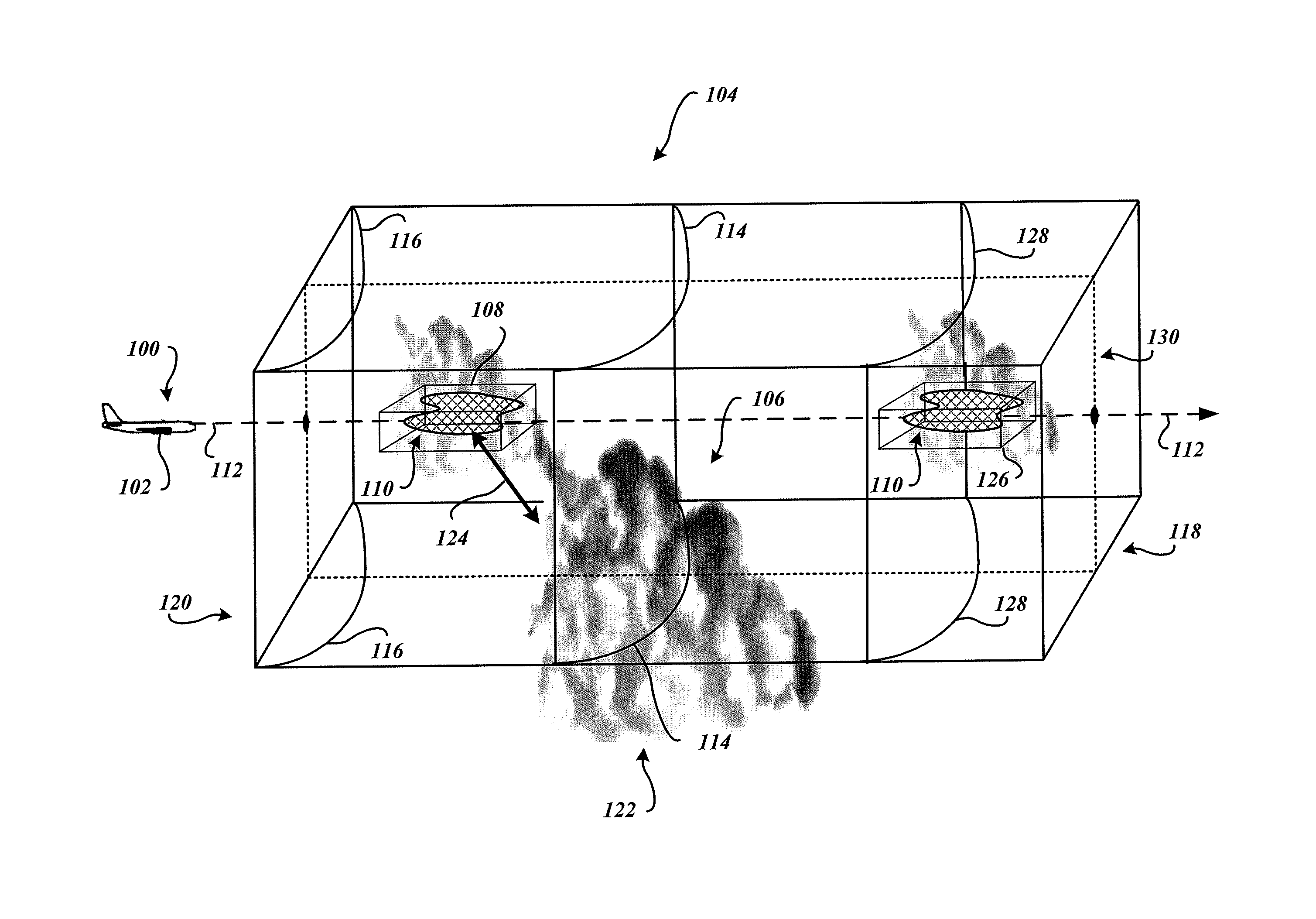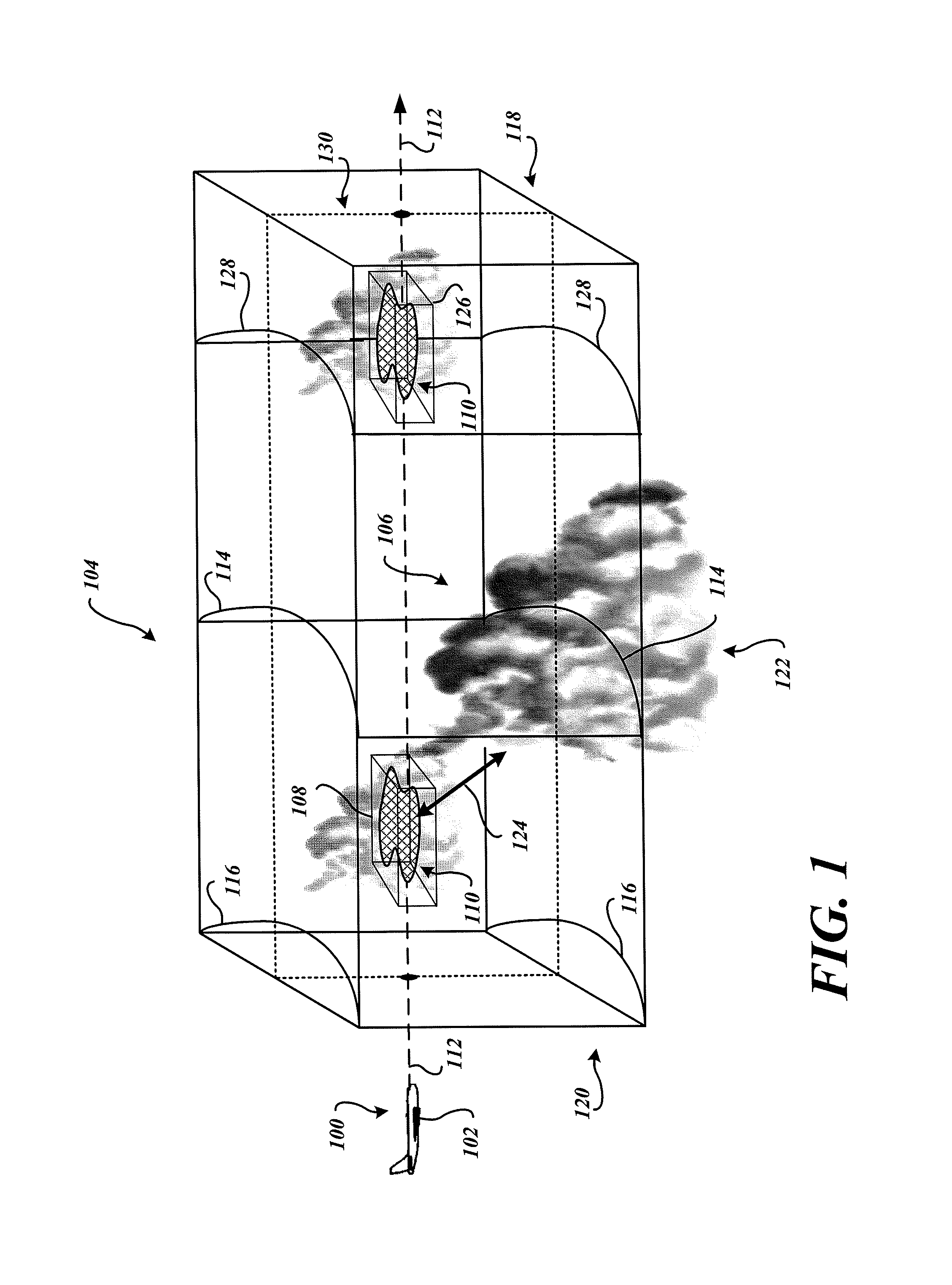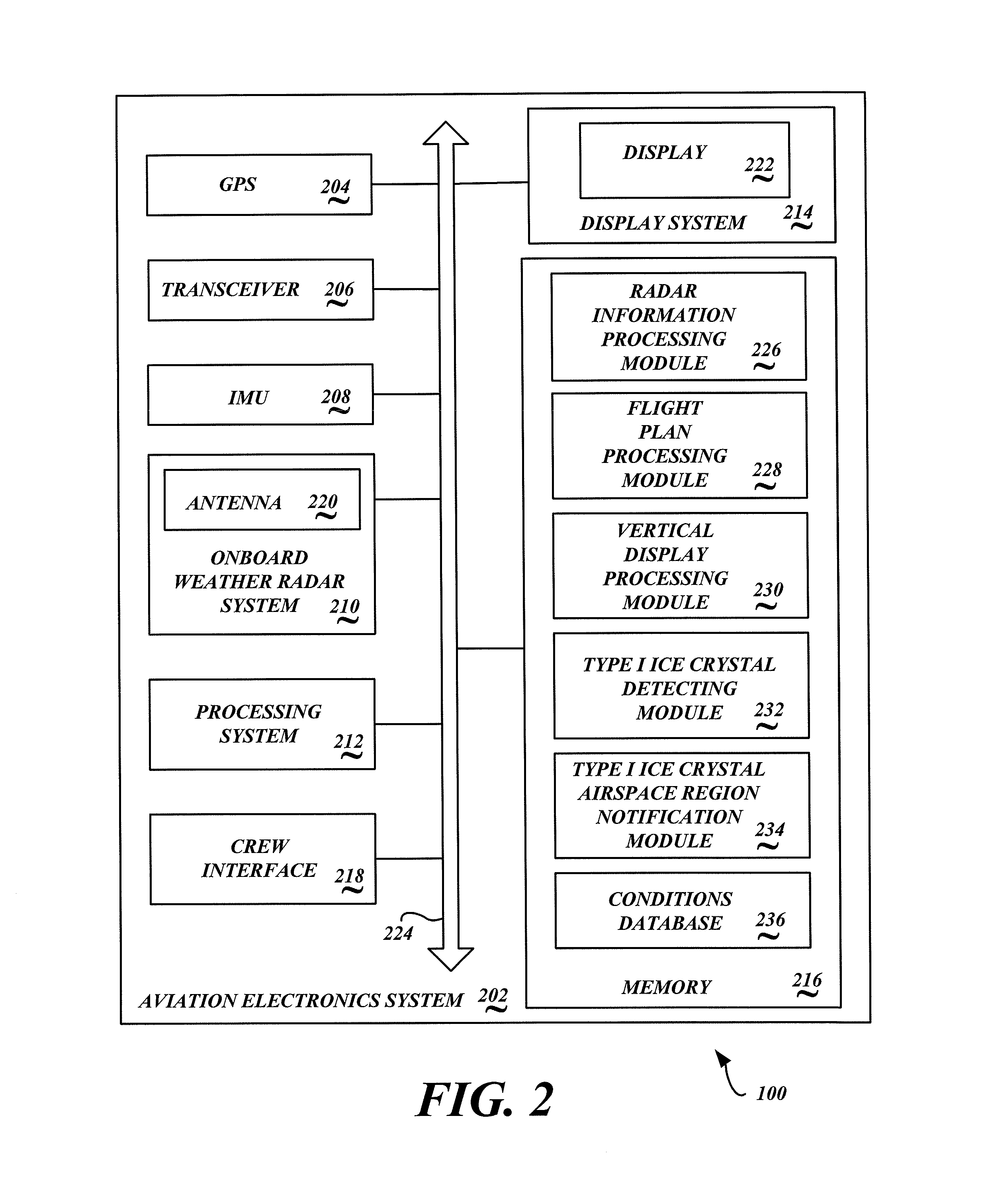System and method to identify regions of airspace having ice crystals using an onboard weather radar system
a technology of airspace and weather radar, which is applied in the direction of reradiation, instruments, and clear air turbulence detection/forecasting, etc., can solve the problems of power loss, power loss of jet engines or even engine damage, and aircraft passing through airspace regions with high concentrations of ice crystals
- Summary
- Abstract
- Description
- Claims
- Application Information
AI Technical Summary
Problems solved by technology
Method used
Image
Examples
Embodiment Construction
[0014]FIG. 1 is a perspective view of a portion of a planned flight path of an aircraft 102 traveling through a region of airspace 104 having convective cloud weather 106 and traveling through a region of airspace 108 with type I crystals 110. The aircraft includes an onboard weather radar system with an embodiment of a type I ice crystal display system 100. For clarity, ice crystals are defined as either type I ice crystals or type II ice crystals herein.
[0015]Type I ice crystals are defined herein as ice crystals typically found at altitudes between 9,000 and 40,000 feet, and / or when the ambient temperature is between −5° C. to −55° C. These high altitude type I ice crystals are associated with the convective cloud weather 106. Type I ice crystals are often not visible to the crew of the aircraft 102, and may be encountered while flying through relatively light cloud cover. Type I ice crystals are not associated with liquid water droplets. That is, liquid water droplets are not pr...
PUM
 Login to View More
Login to View More Abstract
Description
Claims
Application Information
 Login to View More
Login to View More - R&D
- Intellectual Property
- Life Sciences
- Materials
- Tech Scout
- Unparalleled Data Quality
- Higher Quality Content
- 60% Fewer Hallucinations
Browse by: Latest US Patents, China's latest patents, Technical Efficacy Thesaurus, Application Domain, Technology Topic, Popular Technical Reports.
© 2025 PatSnap. All rights reserved.Legal|Privacy policy|Modern Slavery Act Transparency Statement|Sitemap|About US| Contact US: help@patsnap.com



